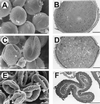Induction of male sterility in plants by metabolic engineering of the carbohydrate supply
- PMID: 11371651
- PMCID: PMC33501
- DOI: 10.1073/pnas.091097998
Induction of male sterility in plants by metabolic engineering of the carbohydrate supply
Abstract
Extracellular invertase mediates phloem unloading via an apoplastic pathway. The gene encoding isoenzyme Nin88 from tobacco was cloned and shown to be characterized by a specific spatial and temporal expression pattern. Tissue-specific antisense repression of Nin88 under control of the corresponding promoter in tobacco results in a block during early stages of pollen development, thus, causing male sterility. This result demonstrates a critical role of extracellular invertase in pollen development and strongly supports the essential function of extracellular sucrose cleavage for supplying carbohydrates to sink tissues via the apoplast. The specific interference with phloem unloading, the sugar status, and metabolic signaling during pollen formation will be a potentially valuable approach to induce male sterility in various crop species for hybrid seed production.
Figures





References
-
- Pacini E, Franchi G G, Hesse M. Plant Syst Evol. 1985;149:155–185.
-
- Pacini E, Franchi G G. In: Microspores: Evolution and Ontogeny. Blackmore S, Barnes S H, editors. San Diego: Academic; 1991. pp. 213–237.
MeSH terms
Substances
Associated data
- Actions
- Actions
- Actions
LinkOut - more resources
Full Text Sources
Other Literature Sources

